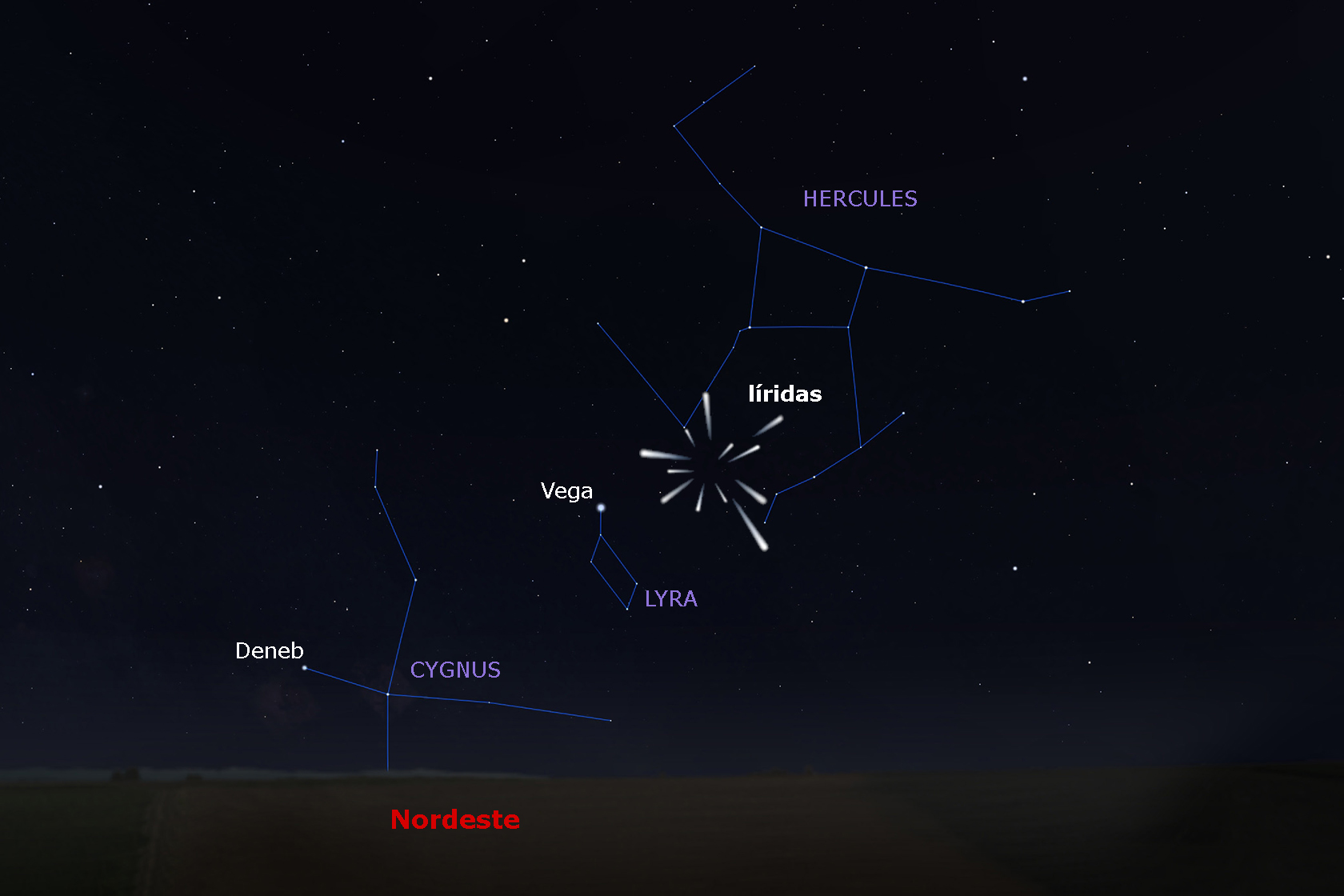Líridas
La lluvia de meteoros de las líridas es visible desde el hemisferio norte (también desde el sur pero a un menor ritmo) entre el 16 y el 25 de abril.
Las líridas tienen una tasa media de actividad de 20 meteoros por hora, y una velocidad de 49 kilómetros por segundo durante varios días. A pesar de ser una lluvia de meteoros discreta, algunos años la tasa de actividad se incrementa a más de 100 meteoros por hora, pero es difícil predecir en que año se producirán estos "estallidos".
Para observadores a nuestras latitudes, 40º norte, el radiante de las líridas se sitúa por encima del horizonte desde una hora después del anochecer hasta el amanecer.
¿Qué se espera en 2025?
En 2025, la máxima actividad de esta lluvia tendrá lugar también durante el día, en torno a las 15h 30m de tiempo oficial peninsular del 22 de abril. La observación en las noches anterior y posterior será más propicia en la primera parte de la noche, ya que el cuarto menguante ocurrirá un día antes, y la Luna saldrá en torno a las 5 de la madrugada.

El 'radiante' de las líridas.
¿Por qué suceden?
Los meteoros de las líridas son fragmentos del cometa C/1861 G1 (Thatcher), un cometa de largo periodo que orbita alrededor del Sol una vez cada 415 años. Como todos los años por estas fechas, la Tierra atraviesa un anillo poblado con fragmentos desprendidos del cometa Thatcher. Cuando uno de esos fragmentos (o meteoroides) entra en contacto con la atmósfera terrestre, se calcina por la fricción con el aire, creando así el resplandor luminoso que conocemos como meteoro o estrella fugaz.
Las líridas se han observado durante los últimos 2600 años, los registros más antiguos se conservan en el libro chino de crónicas Zuo Zhuan y datan del año 687 a.C.
Las lluvias de meteoros parecen tener un único centro de origen, un punto del que parecen surgir todas las estrellas fugaces. Ese punto se denomina "radiante" y su localización se utiliza para nombrar a la lluvia de estrellas. Las líridas tienen su radiante en la constelación de Lyra.
¿Qué hacer para ver las Líridas?
El lugar de observación puede ser cualquiera con tal de que proporcione un cielo oscuro. Es preferible observar desde un lugar que tenga pocos obstáculos para la vista (como edificios, árboles o montañas), y no utilizar instrumentos ópticos que nos limiten el campo de visión. Aunque las líridas parecen venir de la constelación de Lyra (de ahí su nombre), se pueden ver en cualquier parte del cielo. Conviene dirigir la mirada hacia las zonas más oscuras, en la dirección opuesta a la posición de la Luna si la observación se realiza cuando esta esté presente. Lo más cómodo es tumbarse y esperar a que la vista se acostumbre a la oscuridad.

